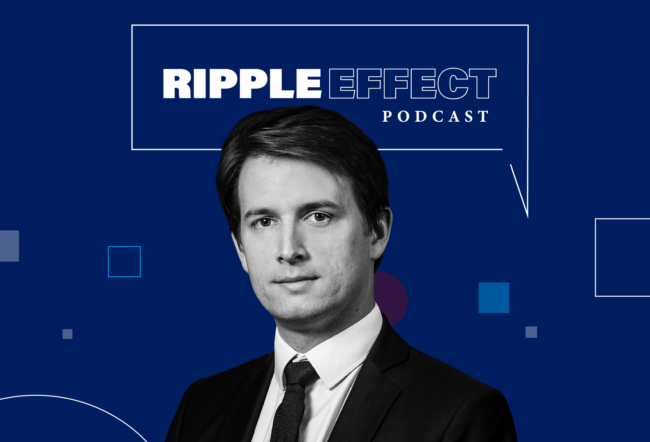Earlier this year, the Securities and Exchange Commission fined Henry Blodget, an Internet analyst at Merrill Lynch, and Jack Grubman, a telecommunications analyst at Citigroup’s former Salomon Smith Barney division, for internally disparaging stocks they were urging outside investors to buy. In addition, both men were barred from the securities business for life.
Wall Street’s defenders say cases such as Blodget’s and Grubman’s are aberrations.
But a new study by Wharton accounting professor Scott Richardson and two colleagues suggests that, even if most sell-side analysts don’t lie, they are so overly upbeat that their forecasts of corporate earnings and stock-price targets are hardly more accurate than falsehoods.
Certainly people who follow the market know that sell-side analysts seldom see stocks they don’t like. In other words, they are not particularly discriminating. But Richardson and his co-authors – Mark Bradshaw at Harvard University and Richard Sloan at the University of Michigan – add a twist. After examining 25 years worth of analyst reports, they conclude that the more a company uses investment banks’ services, the more sell-side analysts like it.
“We find pervasive evidence that the degree of over-optimism in sell-side analysts’ earnings forecasts, stock recommendations and price targets is systematically related to corporate financing activities,” their paper says. “Over-optimism is greatest for firms issuing new capital and least for firms repurchasing existing capital.”
It’s important to understand that sell-side analysts are optimistic across the board. And the more money a company raises, the more optimistic they are about its prospects. For example, the paper says, “Price targets set by analysts are, on average, 80% too high for firms issuing securities versus only 20% too high for firms repurchasing securities.”
The study – titled “Pump and Dump: An Empirical Analysis of the Relation between Corporate Financing Activities and Sell-Side Analyst Research” – also finds that analysts seem to tailor their optimism to the kind of security a company is issuing. “[They] concentrate on hyping the short-term earnings prospects of debt issuers, while they concentrate on hyping the long-term growth potential and price appreciation of equity issuers,” the paper notes. That makes sense when you consider what investors worry about when buying bonds versus stocks. With bonds, they want to know that they are going to be repaid right away because the early years of a debt issue are arguably the riskiest.
Say a company borrows money to build a new plant. Short-term, it has to make payments on its debt while shelling out money to build the plant. But once the plant is complete, the sale of the goods it produces can help repay the debt.
“By exaggerating the short-term earnings prospects of debt issuers, sell-side analysts can reduce the perceived credit risk,” the paper points out. In other words, analysts create an impression that a debt issuer has a strong earnings stream for repaying its debt.
Conversely, bond buyers don’t care as much about long-term earnings prospects because their payments are fixed no matter how well a company does. “In fact, since long-term growth can drain operating cash flow and increase firm risk, it could even be considered a negative by debt holders,” the paper notes.
The opposite is true with stock. Here, many investors don’t sweat the short-term. They want a big upside, and strong long-term earnings drive that. By touting long-term growth potential and thus the upside, analysts can help their firms sell the securities for higher prices.
Oddly, previous studies have found that unaffiliated analysts – that is, sell-side analysts whose firms don’t have investment banking links with the firms they cover – can be as optimistic as affiliated analysts. Unaffiliated analysts may make their overly optimistic forecasts “either in hope of winning future investment banking deals or in return for side-payments from investment banking firms,” the paper says.
Richardson stresses that “the key determinant of over-optimism is the extent to which a firm is issuing new securities, not affiliation.”
Side-payments were one of the misdeeds exposed by New York Attorney General Eliot Spitzer’s investigation into securities industry practices. In April, the country’s 10 largest securities companies agreed to pay $1.4 billion to settle charges stemming from the investigation.
Besides the side payments and misconduct like Blodget’s and Grubman’s, the investigation showed that securities firms were doling out shares in coveted stock offerings to executives who might bring them investment banking business.
Richardson’s paper, based on thousands of observations over more than two decades, seems to provide evidence that these misdeeds were more than just a temporary outgrowth of Internet euphoria. “Our results suggest that pressure to generate investment banking business results in significant and pervasive over-optimism in sell-side research.”
Over-optimism isn’t just a matter of public relations; it ends up costing investors money. Companies’ shares rise during these periods of analyst euphoria and typically peak during the years that firms seek external financing, then lag in subsequent years. “This pattern is consistent with sell-side analysts attempting to promote issuing stocks by touting unrealistically high price targets in the period surrounding securities issuances,” the paper says.
Another way to look at it is: Analysts’ optimistic reports are luring investors to pay more than they should for securities issuances. Or as the paper puts it, “corporations, with the help of the investment bankers, are able to issue securities during periods when their prices are temporarily inflated.”
What does Richardson’s study mean for investors? It points to a conclusion that is as true – and enduring – at Wal-Mart as it is on Wall Street: Buyer beware.



